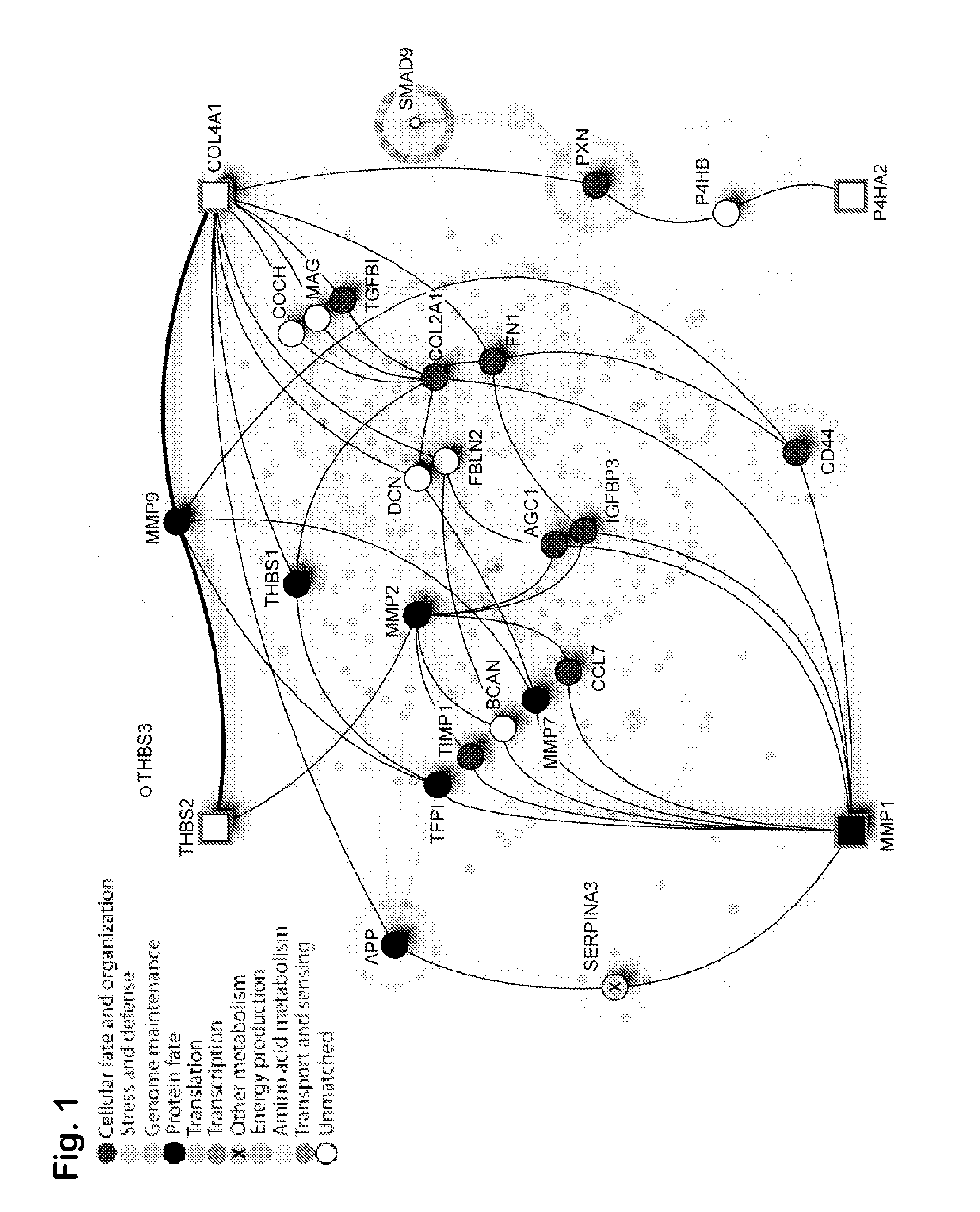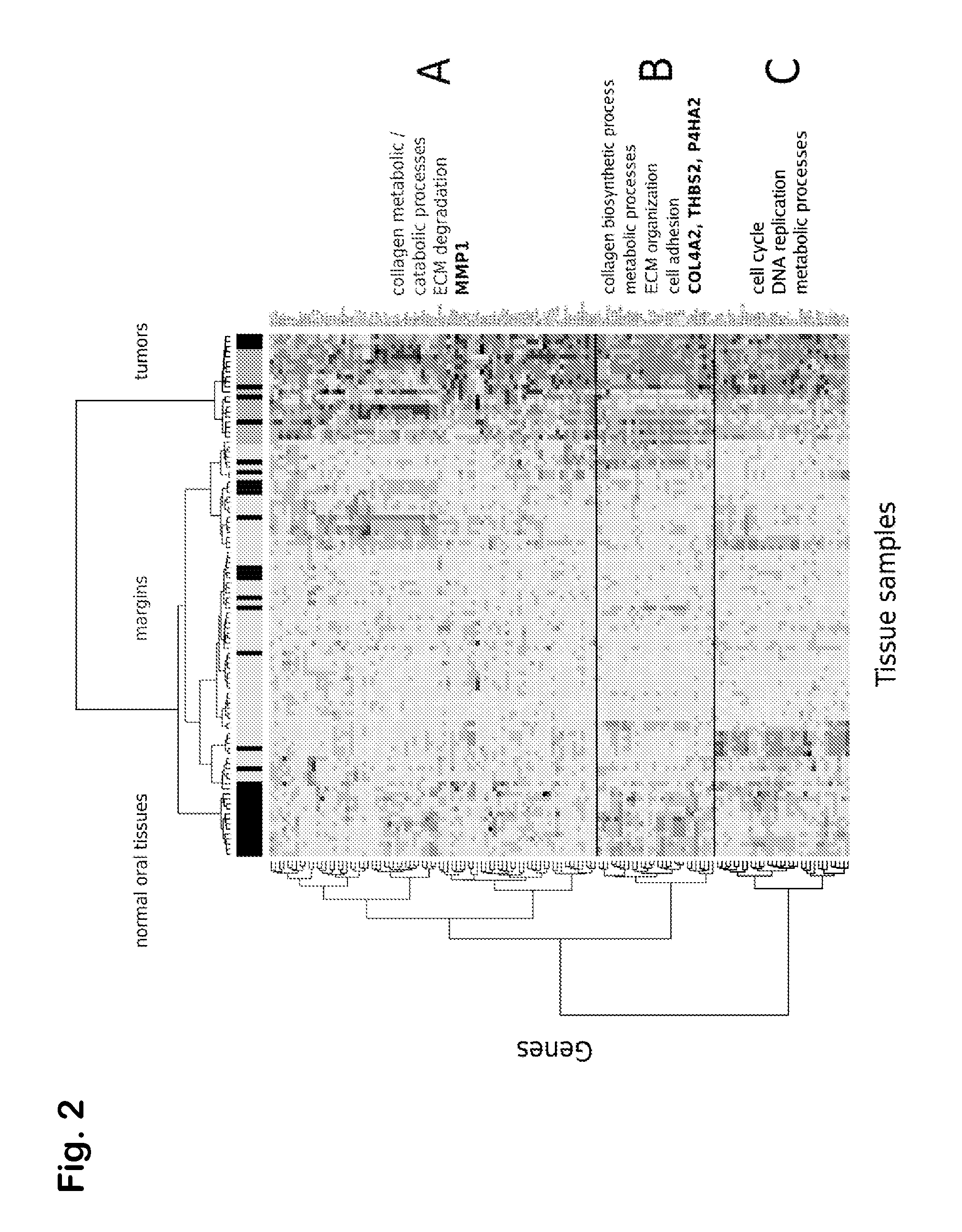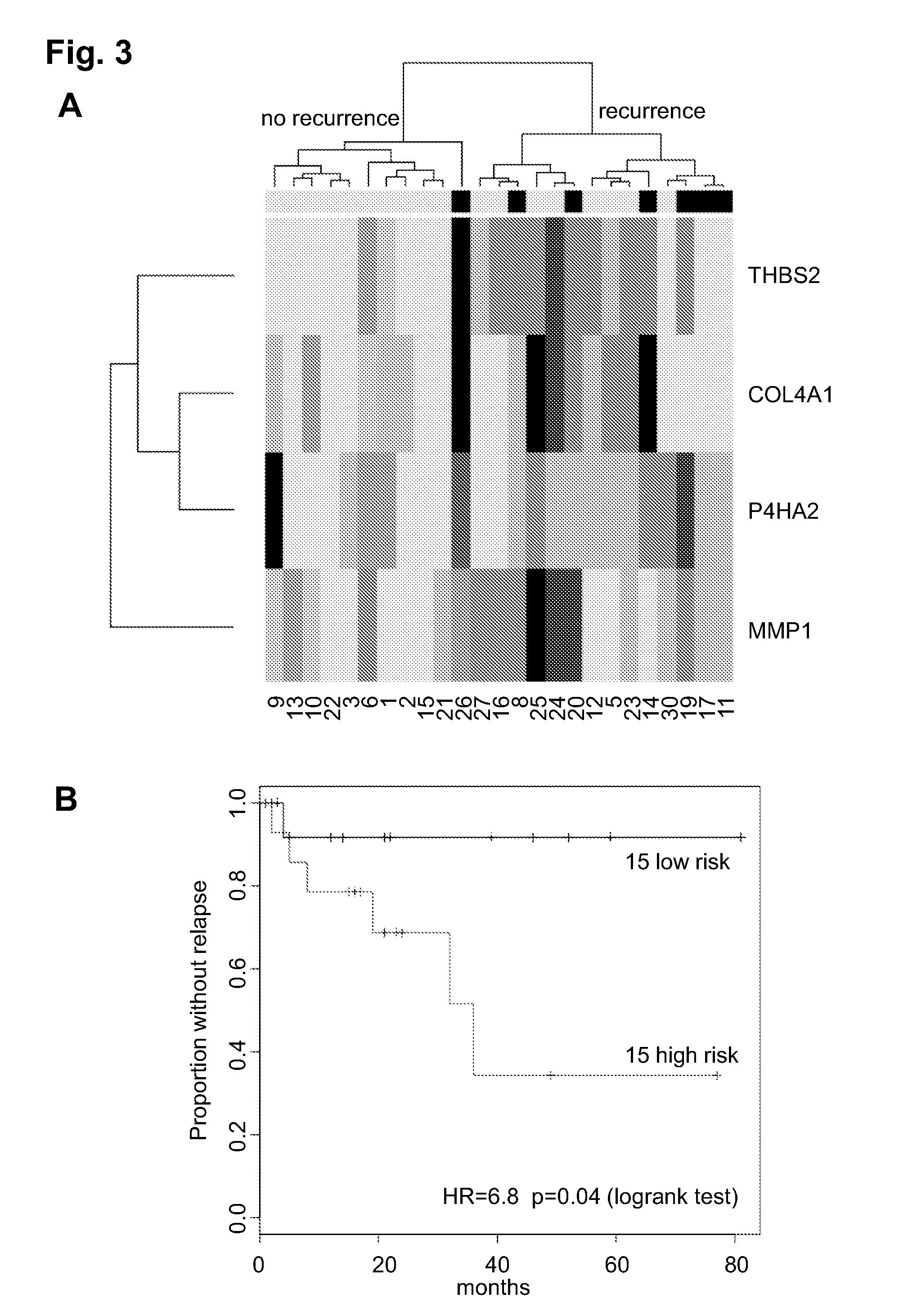Prognostic signature for oral squamous cell carcinoma
a technology diagnostic signature, which is applied in the field of diagnostic signature for oral squamous cell carcinoma, can solve the problems of cancer (oscc, patient death, treatment failure and patient death), and achieve the effect of increasing the expression level and increasing the likelihood of oscc recurren
- Summary
- Abstract
- Description
- Claims
- Application Information
AI Technical Summary
Benefits of technology
Problems solved by technology
Method used
Image
Examples
example 1
Methods
Patients
[0267]This work was performed with the approval of the University Health Network Research Ethics Board. All patients signed their informed consent before sample collection, and were untreated before surgery. Tissue samples were obtained at time of surgery from the Toronto General Hospital, Toronto, Ontario, Canada. Primary OSCC and histologically normal margin samples were snap-frozen in liquid nitrogen until RNA extraction.
Samples Used for Microarrays (Training Set)
[0268]89 samples (histologically normal margins, OSCC and adjacent normal tissues) from 23 patients were used for microarrays. An experienced head and neck pathologist (BP-O) performed histological evaluation of all surgical margins to ensure that they were histologically normal. No patient used in this study had a histologically positive margin. Patient clinical data for this training set are summarized in Table 1.
Samples Used for Quantitative Real-Time Reverse-Transcription PCR (QRT-PCR) (Validation Set)...
example 2
[0294]In the clinic, genetic analysis of histologically normal margins can be performed to determine the expression of the 4-gene signature.
[0295]This analysis can be done after surgery, using either the frozen margins or the formalin-fixed, paraffin-embedded (FFPE) margin tissues. It is likely to use these FFPE tissues, since fixation in formalin and paraffin-embedding is a standard procedure for these samples.
[0296]In this case, qRT-PCR or digital molecular barcoding technology, such as Nanostring analysis of these tissues could be used.
[0297]Following genetic analysis, a risk score can be calculated which indicates the risk of the patient to have recurrence of the primary tumor. The risk score is a weighted average of expression values, using the coefficients provided in Table 6. For example, the relative expression of each gene, relative to the control sample and optionally one or more endogenous control genes (such as GAPDH, actin etc is calculated and used to calculate a value...
example 3
[0298]The predictive ability of all subsets of the four-gene signature in the training and validation cohorts was estimated by bootstrap resampling of a single margin per patient. For each simulation, a single margin from each patient was selected randomly and used to calculate the risk score for that patient. These risk scores were used to estimate a hazard ratio for each simulation. The results are shown in Table 8. Median HR is the median hazard ratio of the thousand simulations, and fraction >1 is the fraction of simulations where the estimated hazard ratio was greater than 1 (some predictive effect). Only two subsets in the validation set were not estimated to have predictive value (COL4A1 and THBS2+COL4A1). For example, the THBS2+COL4A1 combination is likely not predictive due to the contribution of COL4A1.
TABLE 8Predictive ability of all subsets of the four-gene signaturein the training and validation cohorts, estimated by bootstrapresampling of a single margin per patienttra...
PUM
| Property | Measurement | Unit |
|---|---|---|
| Level | aaaaa | aaaaa |
Abstract
Description
Claims
Application Information
 Login to View More
Login to View More - R&D
- Intellectual Property
- Life Sciences
- Materials
- Tech Scout
- Unparalleled Data Quality
- Higher Quality Content
- 60% Fewer Hallucinations
Browse by: Latest US Patents, China's latest patents, Technical Efficacy Thesaurus, Application Domain, Technology Topic, Popular Technical Reports.
© 2025 PatSnap. All rights reserved.Legal|Privacy policy|Modern Slavery Act Transparency Statement|Sitemap|About US| Contact US: help@patsnap.com



